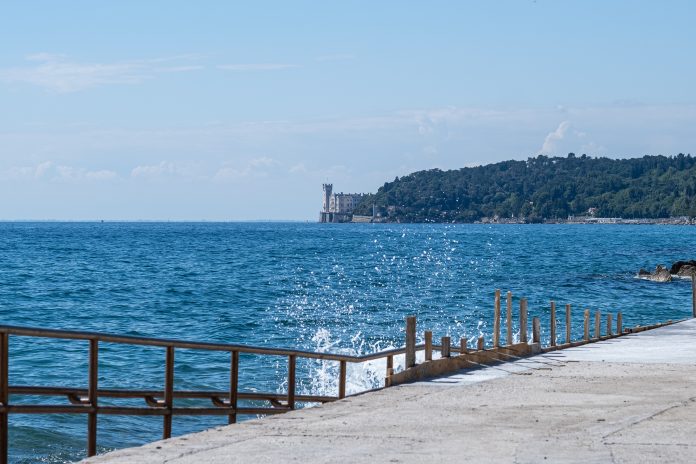by InTrieste
The regional government of Friuli Venezia Giulia has greenlit an ambitious new project aimed at assessing the structural integrity of Trieste’s historic breakwater, a key piece of coastal infrastructure that dates back over a century. The initiative, spearheaded by the region’s Councilor for Environmental Defense, Fabio Scoccimarro, seeks to investigate the effects of increasingly severe weather patterns on the structure, which plays a critical role in protecting the city’s coastline.
The breakwater, located just off Trieste’s Porto Vecchio, has withstood decades of storms and high seas. But recent severe weather events — including powerful storms that struck in the autumn of 2023 — have raised concerns about its long-term stability. To address these concerns, the regional government has allocated €200,000 ($212,000) for comprehensive structural and geotechnical studies, which will be conducted in collaboration with the Port System Authority of the Eastern Adriatic Sea.
“The goal is to thoroughly understand the current condition of the breakwater after the significant storms of 2023,” said Scoccimarro in a statement. “We need to ensure that it remains capable of performing its primary function — protecting the coastline — especially in light of expected sea level rise and more extreme weather conditions over the coming decades.”
Both the regional government and the port authority have a vested interest in the outcome of these studies. Not only does the breakwater safeguard Trieste’s coastline, but it also plays a key role in the city’s broader redevelopment plans. Parts of the breakwater and surrounding spaces have already been earmarked for potential tourism and recreational use, in accordance with the city’s master plan.
The structural assessments are particularly timely given Trieste’s renewed focus on sustainable urban development and its ambitious vision for the future of the Porto Vecchio district, which has been the subject of extensive redevelopment efforts in recent years. However, officials stress that the breakwater’s primary function will remain coastal protection.
As climate change accelerates, sea level rise and more intense storms are expected to pose increasing challenges for coastal cities like Trieste. Scoccimarro emphasized that the planned studies will provide vital data, enabling the region to make informed decisions about the future of its coastal defenses. The technical findings could also inform broader discussions about climate resilience in Italy’s coastal communities, many of which are grappling with similar challenges.
“This is not just about today’s weather,” Scoccimarro said. “We need to prepare for the next 50 or 100 years, and that means ensuring that our infrastructure can withstand whatever the future holds.”
The results of the study are expected to be published early next year, providing a critical roadmap for Trieste’s efforts to protect its coastline and adapt to a changing climate.





























